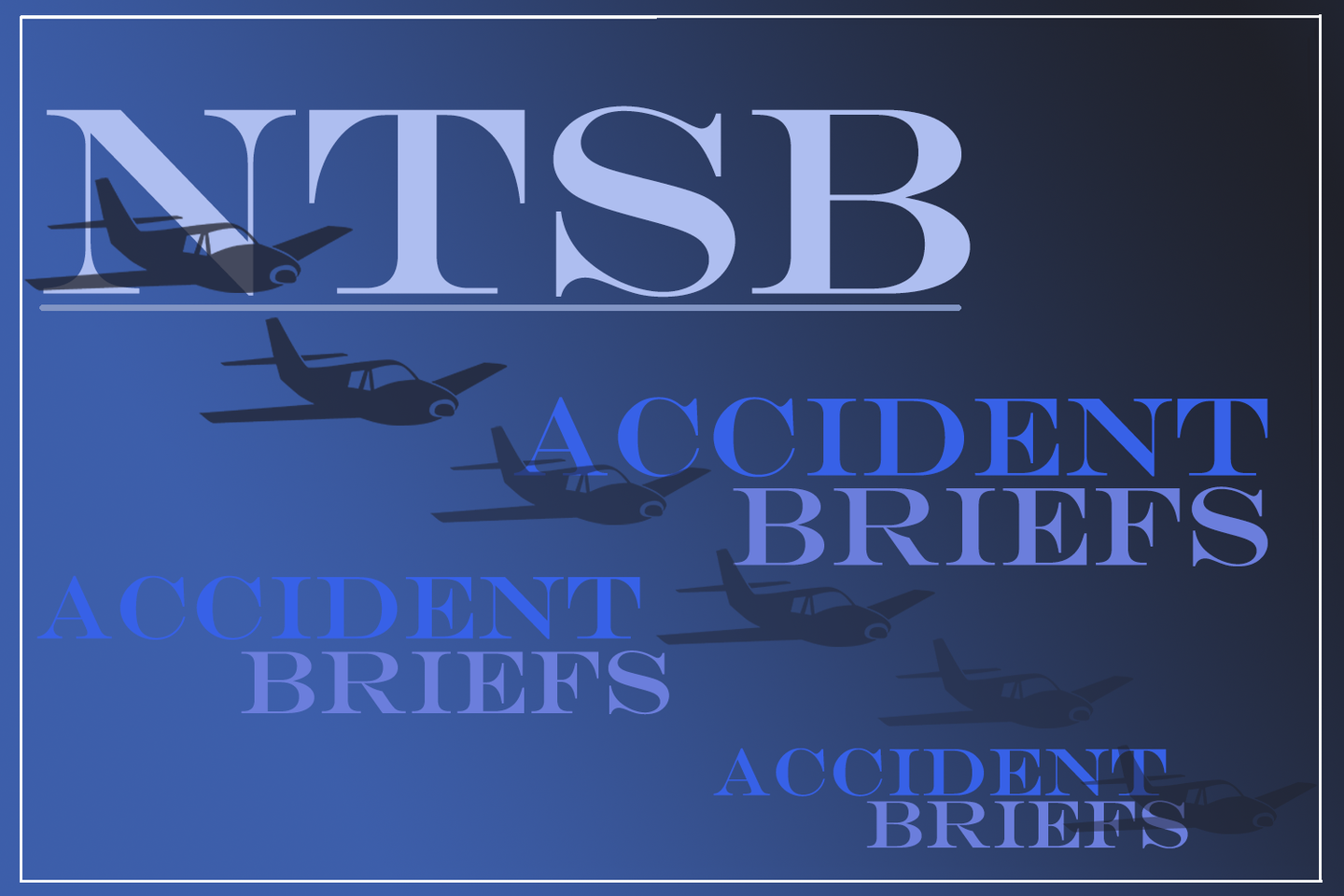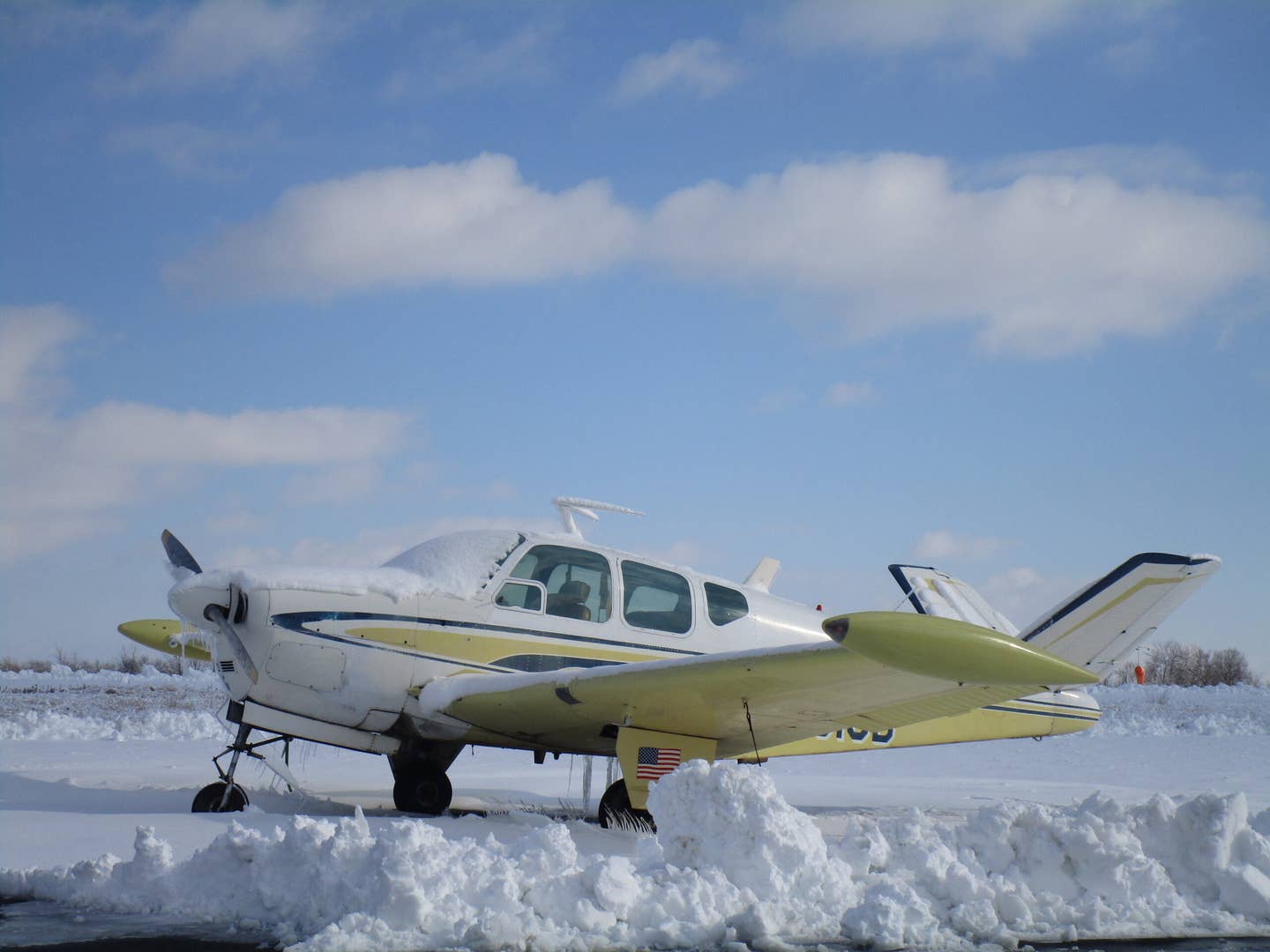Accident Brief: Fatal Beech A36 Bonanza Accident In Ohio
Beech A36 Bonanza Elida, Ohio/2 Fatal The noninstrument-rated private pilot and passenger departed on the cross-county flight under visual flight rules (VFR) in visual meteorological conditions and proceeded on course…

Beech A36 Bonanza
Elida, Ohio/2 Fatal
The noninstrument-rated private pilot and passenger departed on the cross-county flight under visual flight rules (VFR) in visual meteorological conditions and proceeded on course at an altitude of about 9,000 ft mean sea level (msl). As the flight progressed, the weather conditions deteriorated, and about halfway through the flight, the pilot appeared to deviate before resuming flight toward the destination and descended to about 2,000 ft msl over about 30 minutes. Within 20 miles of the accident site, the pilot executed multiple course changes, including two 360° turns. The airplane then entered a right turn from a southeasterly course to a southwesterly course, and about 1 minute before the accident, the airplane re-entered the right turn, which progressed into a right graveyard spiral that continued until impact.
Weather observations and satellite imagery indicated that instrument meteorological conditions (IMC) prevailed in the vicinity of where the pilot began making the multiple course changes and at the accident site. It is likely that the pilot encountered rain, and possibly heavy rain, during the final portion of the flight. There was no record of the pilot obtaining a preflight weather briefing from an official source.
Examinations of the airframe and engine did not reveal any anomalies consistent with a preimpact failure or malfunction.
Toxicology testing of the pilot revealed the presence of carboxy-delta-9-tetrahydrocannabinol (THC), an inactive metabolite of THC. The low-level presence of the inactive THC metabolite suggests that the pilot was not under the influence of THC at the time of the flight, and therefore, it is unlikely that any effects from the pilot's prior use contributed to the accident. The testing also revealed the presence of diphenhydramine; however, it did not provide a blood level. Therefore, whether the pilot might have been impaired from the diphenhydramine at the time of the accident or whether his prior use contributed to the accident could not be determined.
The restricted visibility conditions present in the area were conducive to the development of spatial disorientation, and the airplane's maneuvering and spiraling descent are consistent with the known effects of spatial disorientation. It is likely that the pilot experienced spatial disorientation during an encounter with instrument meteorological conditions, which resulted in a loss of control.
Probable cause(s): The noninstrument-rated pilot's decision to continue visual flight rules flight into an area of instrument meteorological conditions, which resulted in a loss of control due to spatial disorientation. Contributing was the pilot not obtaining a weather briefing prior to the flight.
Note: The report republished here is from the NTSB and is printed verbatim and in its complete form.

Subscribe to Our Newsletter
Get the latest Plane & Pilot Magazine stories delivered directly to your inbox






